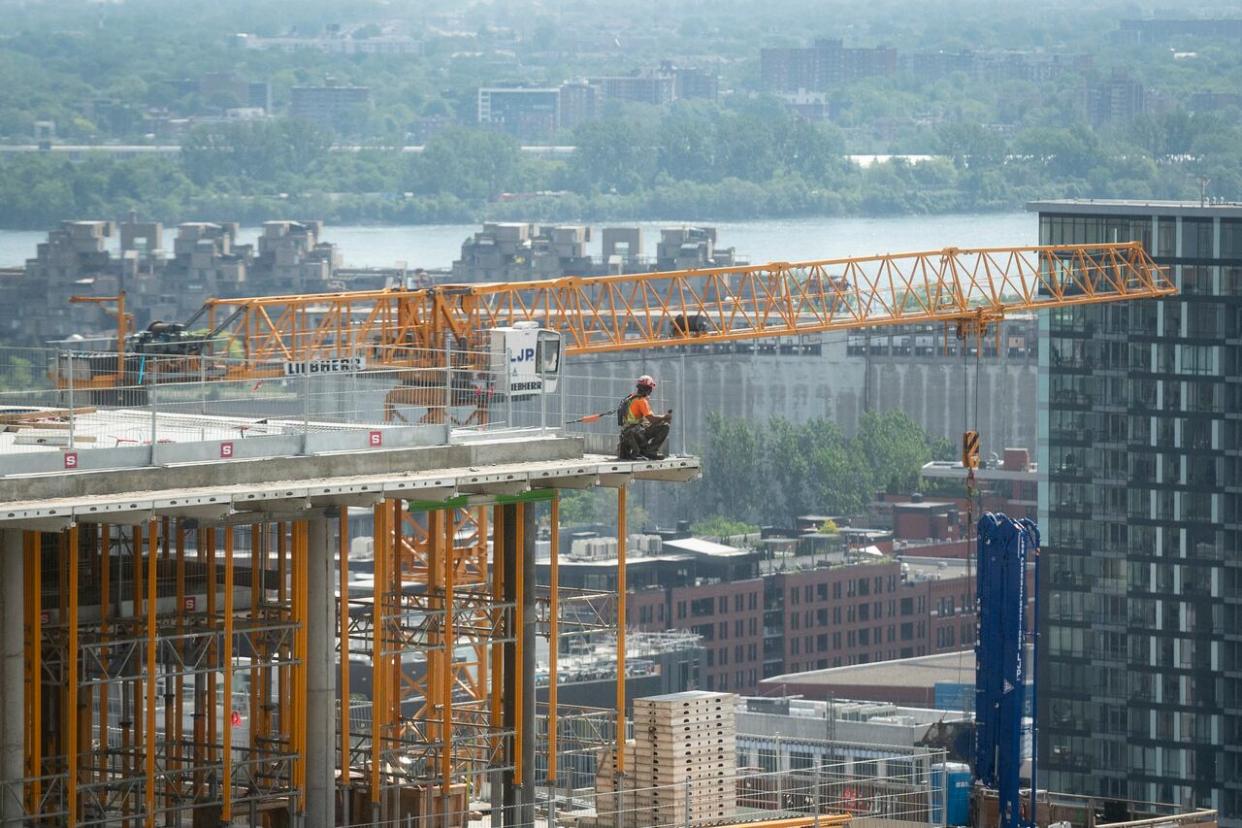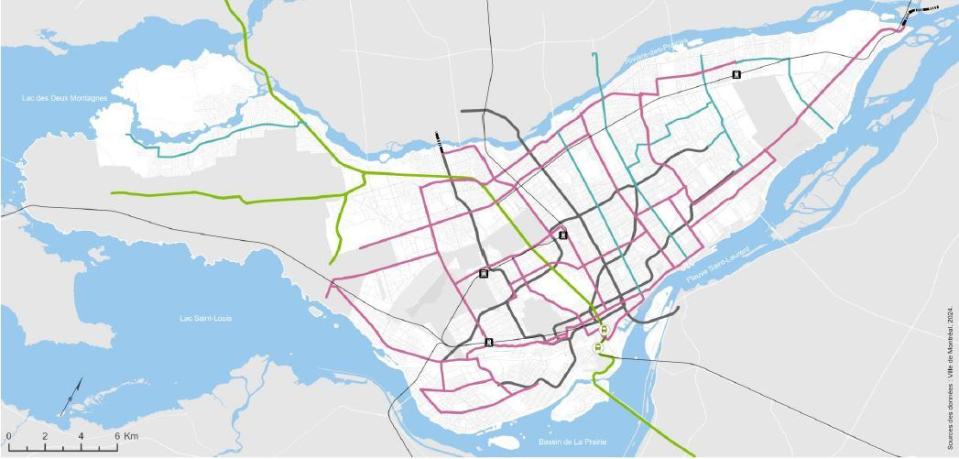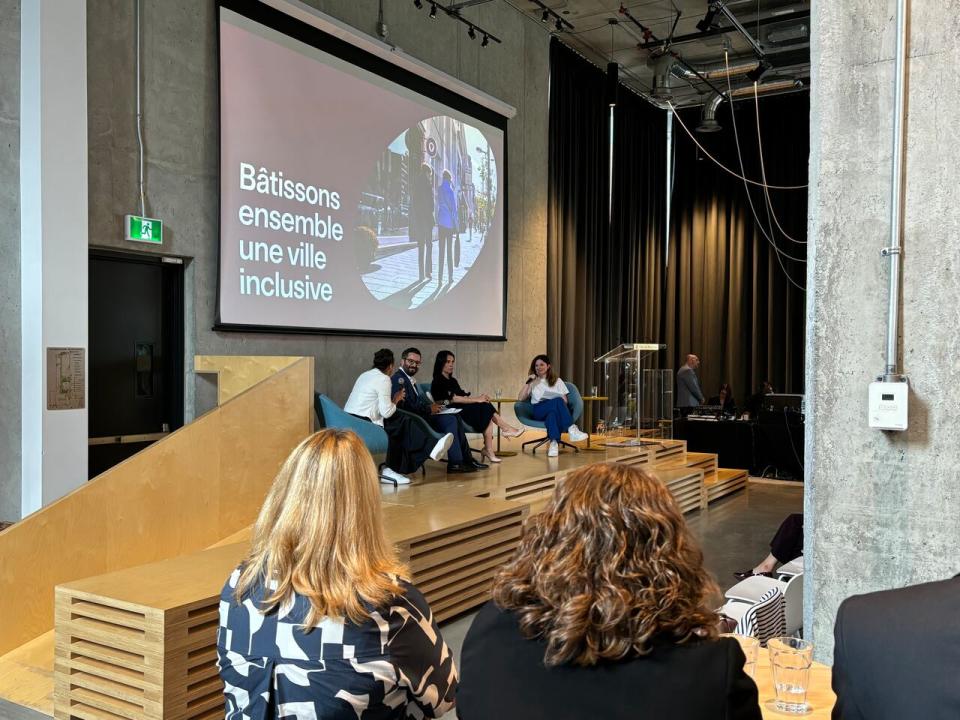What will Montreal look like in 26 years? City says more housing, trees and public transit

It's 2050 and Montreal is a sprawling metropolis with tens of thousands of off-market rental units, a dense tree canopy and a vast network of tramways.
City officials presented that image on Tuesday, calling it the Plan Montréal 2050 — their vision of what the city will look like in 26 years.
At a morning press conference, Mayor Valérie Plante said the plan, released in a heap of more than 200 documents, diagrams and graphics, was a "key" guide for the city.
"We want to develop the territory in an intelligent way," she said.
The plan says Montreal in 2050 should have several tramways — and at least one Metro extension on the Blue Line. Cars are deprioritized, with the vast majority of travel taking place on foot, by bicycle on new, year-round bike lanes or using the expanded public transit network.

The city of Montreal presented a plan for its transit network in 2050. The plan shows the REM in green, Metro network in black, rapid bus lanes in blue and tramways in pink. The mayor acknowledged that the plan heavily depends on funding from other levels of government. (City of Montreal)
The city will also be greener, literally, with the tree canopy expanding to cover 40 per cent of the city's territory and 125 kilometres of "green corridors."
Beyond public transit and greenery, the plan calls for greater densification and the addition of 200,000 homes, 20 per cent of which will be off-market: co-ops or social housing, for example.
The whole plan reflects the city administration's vision for an ideal metropolis: one that includes dense, affordable housing, is easy to navigate with a variety of public transit options and is designed to be beautiful and fight climate change.
The plan is based on years of public consultations and discussions about the values that the city should promote. City officials say it will help guide their planning decisions.
Plante acknowledged that the plan, particularly the sections about public transit investment and housing, depends on funding from other levels of government.

City officials, including the mayor, attend a panel on June 11, 2024 to discuss their vision for Montreal's future. (Gabriel Guindi/CBC)
"We don't control financial decisions and we're dependent on federal and provincial governments," she said. "But for us, it was important to show the way. We know where people are coming, we've done the studies. We hope it's integrated into future transport plans."
Maja Vodanovic, borough mayor of Lachine and a member of Plante's Projet Montréal, said that once the city council has adopted the plan, boroughs like hers will have to get their zoning regulations in line with the city's vision — which means integrating density into a network of green spaces and public transit.
"We have a very similar vision," she said. "Our vision for Lachine east is now what is proposed for all the developments so we're very happy."
But Richard Shearmur, an urban planning professor at McGill University, emphasized the city's plan is aspirational.
"The city doesn't actually have the money to build 200,000 houses. It doesn't have the money to extend the public transit network," he said. "So, underlying all these aspirations which do give an idea of where the city would like to head is the critical question of where is the money coming from?"
During her time in office, Plante and her party have expanded the city's network of bike paths and championed pedestrian-friendly infrastructure. She has also led a push by the city to build more off-market housing, but her efforts have stalled, in part, the city says, due to lack of funding from other levels of government.
Rental rates in the city have risen. However, a CBC News analysis published on Tuesday showed that it is still cheaper on average to rent a home in Montreal than in other major Canadian cities like Toronto and Vancouver.
The analysis shows, however, that rental prices are high in the city. It is difficult to find an affordable two-bedroom apartment with a household income of $96,910, the median household income in Quebec.
More density is likely to help lower housing prices — but the city's target for housing falls short of what the Chamber of Commerce of Metropolitan Montreal says is necessary. In a report released this month, it predicted that nearly 460,000 homes would need to be built by 2041 to bring some balance back to the housing market.


